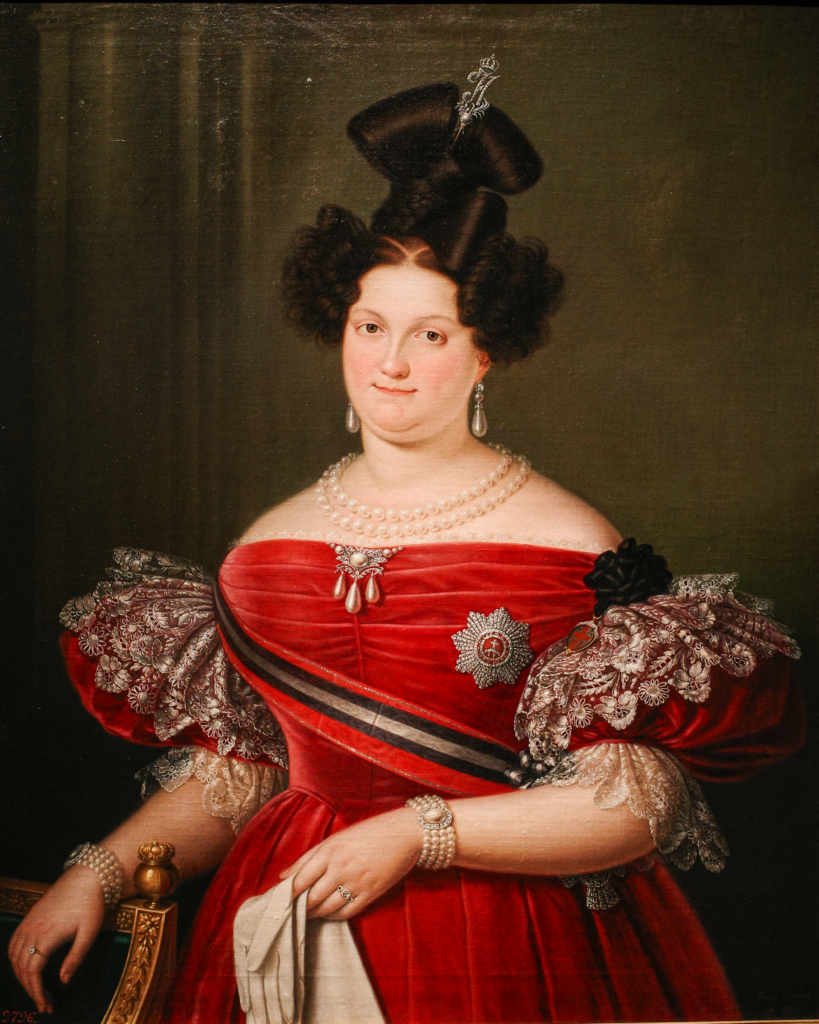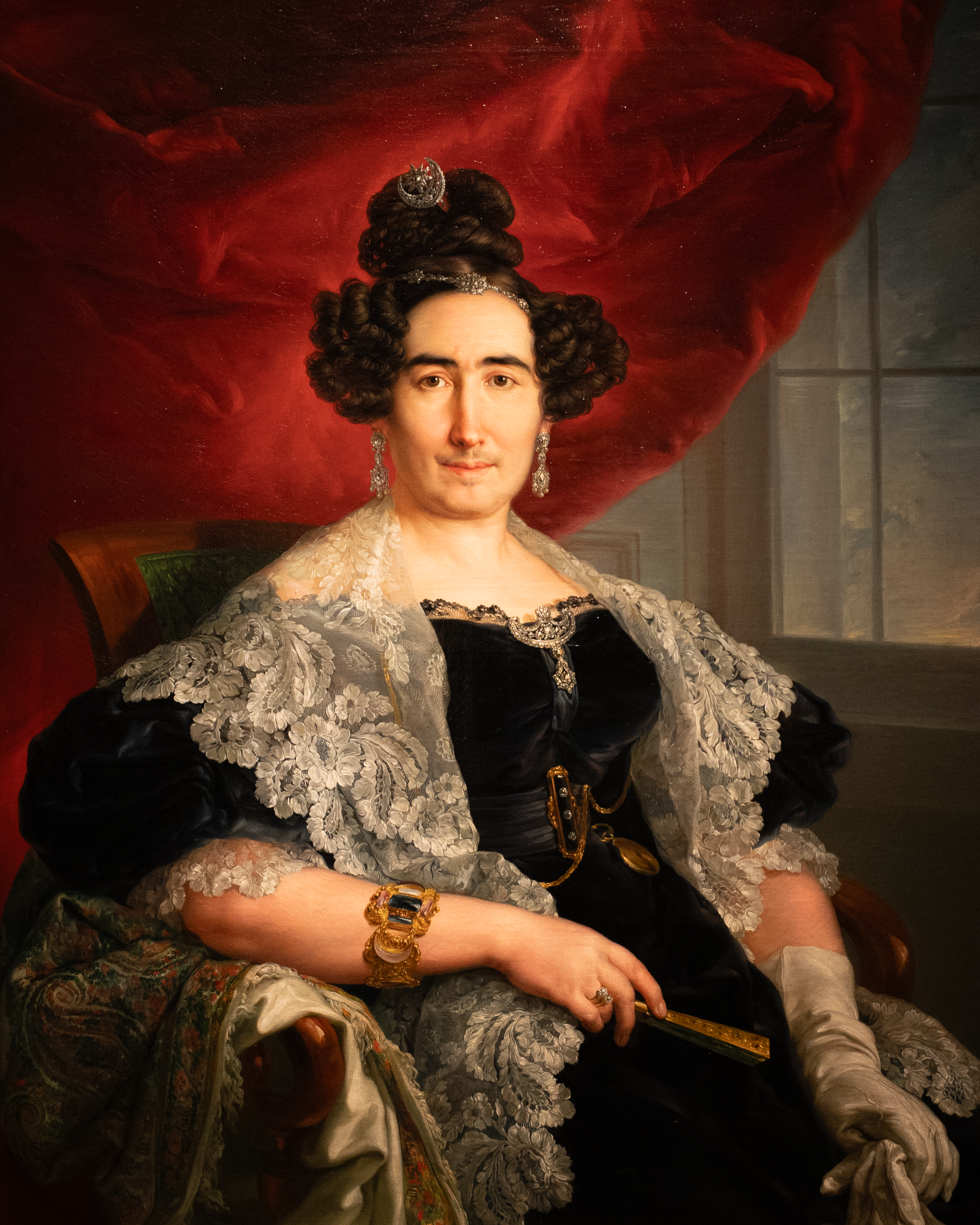At first glance, Mrs. Delicado de Imaz is not the typical muse of portraiture. Her features are plain, perhaps even severe by conventional standards. Her bows threaten to meet in the middle, and there’s a hint of a mustache above her upper lip. Yet, in the hands of the great 19th-century painter Vicente López, her likeness becomes an extraordinary celebration of artistry and dignity. Through exquisite detailing and luminous texture, the artist transforms what might seem ordinary into something strikingly profound. This ability to elevate and humanize is at the heart of XIX. The Century of the Portrait at CaixaForum Palma. Here, the exhibition invites visitors to explore how 19th-century artists used portraiture not just to flatter, but to capture the essence of their subjects, bridging the gap between individuality and societal ideals.

On display until March 2, 2025, this collection of astonishing works from Madrid’s Prado Museum, offers a comprehensive exploration of 19th-century portraiture, highlighting its evolution and significance during a period of profound social and cultural transformation. It includes paintings, sculptures, miniatures, photographs, and medals, many of which are being presented in Palma for the first time.
Here, you’ll see tour-de-force masterpieces by eminent artists such as Francisco de Goya, Joaquín Sorolla, Federico de Madrazo, Eduardo Rosales, Mariano Fortuny, Ignacio Pinazo, Mariano Benlliure, and the aforementioned López. Goya’s influence is particularly significant, as he bridged the 18th and 19th centuries, capturing the essence of his subjects with unparalleled psychological depth. His works set a precedent for subsequent painters, who continued to explore the complexities of human character and societal roles through portraiture.

The 19th century undoubtedly marked a pivotal era for portraiture, with this art form reflecting the dynamic shifts in society, politics, and art. The century saw the rise of the bourgeoisie, shifts in political power, advances in technology, a changing role for women and children, and new perspectives on the colonized “other”.
Portraiture during this period became a means of documenting and asserting one’s identity amidst these transformations. Artists began to move away from idealized representations, focusing instead on capturing the individuality and inner life of their subjects. This shift is evident in the diverse array of works presented in the exhibition, which showcases a range of styles and approaches that mirror the evolving artistic landscape of the time.

The exhibition is thoughtfully divided into eight thematic sections, each delving into distinct facets of portraiture:
1. The Image of Power: This section examines how portraits were utilized to convey authority and status. Here are monarchs, ministers, and other prominent figures. Notably, it includes a preparatory study by Goya for his extraordinary portrait of the family of Carlos IV.
2. The Discovery of Childhood: Here, the focus is on the portrayal of children, highlighting the era’s evolving perceptions of childhood and innocence.
3. Female Identities: This segment explores the representation of women, capturing their roles, fashions, and societal positions during the tumultuous century.
4. Male Identities: Complementing the previous section, this part delves into male portraiture, reflecting the aspirations and self-images of men in the 19th century.
5. The Image of Death: Addressing posthumous portraits and death masks, this section reflects on mortality and remembrance practices of the time.
6. Portraits and Self-Portraits of Artists: Offering insights into how artists viewed themselves and their peers, this segment includes self-portraits and depictions of fellow creators.
7. Effigies Amicorum: Writers, Musicians, and Actors: Celebrating cultural figures, this section presents portraits of influential personalities from literature, music, and theater.
8. The Artist in the Studio: Providing a glimpse into the creative spaces, this part showcases artists at work, emphasizing the process of creation.

Visitors to the exhibition can engage with various interpretative materials, including downloadable audio guides accessible via QR codes. These guides offer multiple perspectives on the artworks, focusing on artistic techniques, societal context, and fashion of the 19th century, thereby enriching the viewing experience.
XIX. The Century of the Portrait not only explores the technical prowess of 19th-century artists but also serves as a window into the societal values, aspirations, and transformations of the era. With its rich and diverse collection of portraits, the exhibition invites viewers to reflect on the enduring power of portraiture as a medium for personal and collective expression.
For those interested in exploring this rich tapestry of 19th-century portraiture, CaixaForum Palma is located at Plaza de Weyler, 3, 07001 Palma. The center and exhibition are open daily from 10:00 to 20:00. General admission is 6 €, with free entry for CaixaBank clients and visitors under 16 years old.








